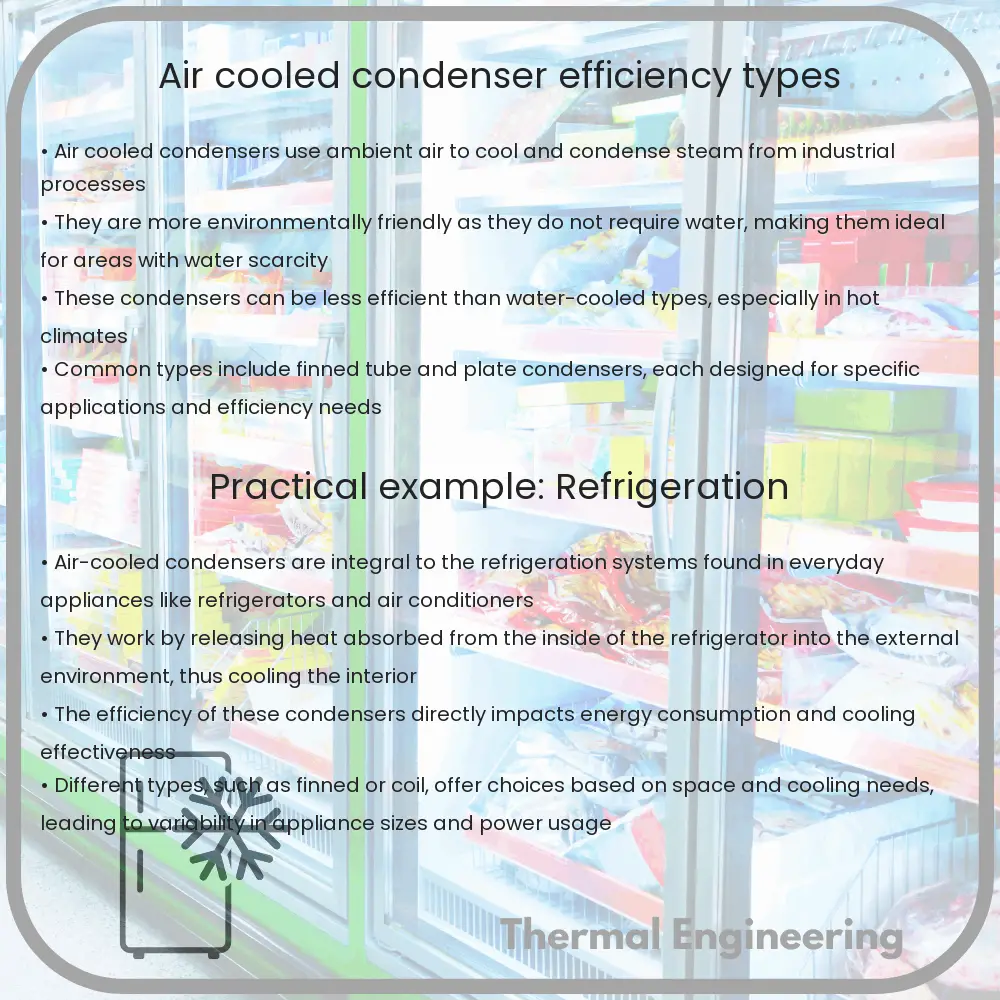Learn about the types and efficiency factors of air cooled condensers, crucial components in HVAC and industrial cooling systems.

Air Cooled Condensers: Understanding Efficiency and Types
Air cooled condensers are a pivotal component in various cooling systems, including HVAC (Heating, Ventilating, and Air Conditioning) units and industrial cooling processes. These devices are engineered to condense exhaust steam from a turbine and are often used in environments where water is scarce. The efficiency and type of an air cooled condenser can significantly influence overall system performance. This article discusses the different types of air cooled condensers and delves into the factors affecting their efficiency.
Types of Air Cooled Condensers
There are several types of air cooled condensers, differentiated by their design and airflow mechanisms. The choice of condenser type depends on factors such as available space, cost, ambient temperature, and specific system requirements.
- Flatbed Condenser: This type consists of tubes arranged in layers, with fans mounted below or above to drive air over the tubes horizontally.
- V-Shaped Condenser: Here, the tubes are arranged in a V configuration which increases the surface area for heat exchange and can significantly improve the cooling efficiency compared to flatbed designs.
- A-Frame Condenser: Similar to the V-shaped, the A-frame condenser arranges the tubes in an ‘A’ shape, facilitating even greater air contact with the tubes. This is particularly advantageous in settings requiring high-efficiency cooling.
- Vertical Condenser: In this type, tubes are aligned vertically, allowing air to pass upwards through the condenser. This design helps in reducing the footprint of the equipment and can be beneficial in limited space scenarios.
Factors Affecting the Efficiency of Air Cooled Condensers
The efficiency of air cooled condensers is influenced by several factors:
- Ambient Temperature: Higher external temperatures can reduce the condenser’s ability to reject heat, impairing its efficiency. This is because the temperature difference (ΔT) between the ambient air and the steam inside the tubes decreases.
- Airflow Rate: Adequate airflow over the condenser coils is crucial. Lower airflow can cause higher condenser temperatures and reduce operational efficiency.
- Condenser Design: The design of the condenser affects how well air can move through the unit and contact the tubes, impacting heat rejection capabilities.
- Maintenance: Regular cleaning and maintenance of condenser tubes are essential to maintain heat transfer efficiency. Fouling, which is the accumulation of dirt and debris on condenser surfaces, can significantly impede performance.
Improving Efficiency in Air Cooled Condensers
To enhance the performance of air cooled condensers, it’s crucial to optimize airflow, maintain proper cleaning schedules, and consider innovative designs that maximize heat rejection, such as hybrid designs that combine air-cooled and evaporative cooling elements. Additionally, advanced fan designs can help to reduce energy consumption while maintaining high efficiency levels.
Conclusion
Air cooled condensers play a critical role in the efficiency of cooling systems across various industries. By choosing the appropriate condenser type and maintaining it correctly, it is possible to achieve considerable improvements in system performance. Understanding the factors that affect condenser efficiency is key in optimizing operations and ensuring that equipment functions at optimal levels.